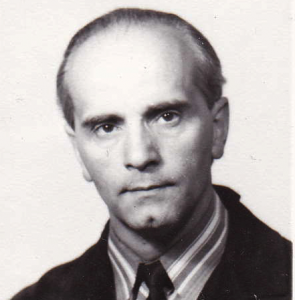János Aszalós
His first job, from 1965, was at the Computer Center of the then Ministry of Construction and Urban Development (ÉVM) (his areas of work: data preparation, data verification, and then programming on the URAL-2 computer; the largest volume of work was related to resource scheduling tasks developed and created for construction companies).
From 1972 to 1991, he worked as a programmer and then as a program designer at the Information Processing Laboratory (Infelor), then at its successor institutions, the Computer Applications Research Institute (Számki), and the Computer Applications Company (Számalk) (one of his first works was the creation of a macro-assembler; later he dealt with the methodology of structured programming, at both the research, practical and publication levels).
He participated in the research and development of several branches of artificial intelligence (formal linguistics, various expert systems and frameworks). He also dealt with their mathematical foundation and practical application (cognitive psychology, knowledge representation, mathematical logic, decision strategies - with particular attention to health diagnosis and medical thinking). He participated in the development of a cardiology expert system (under the leadership of Professor Ede Kékes at the Institute of Continuing Medical Education); also in the development of a cardiology system (under the leadership of Attila Naszlady at the National Korányi Pulmonology Institute); in the development of the first Hungarian gastroenterology expert system ( GAIA ) (under the leadership of László Simon and András Jávor, at the Balassa János Hospital in Szekszárd, and the Ministry of Health's Medical Care Information Center - GYÓGYINFOK ). He developed nearly 30 publications, educational materials, and studies on these topics.
He has given lectures on artificial intelligence topics at several domestic and foreign conferences (Dresden, Bratislava, Sofia. Varna, Leningrad, Paris, Bratislava); he held a one-week course on the principles of formal languages in Havana. In the meantime, he taught at the Számalk educational center and was an external lecturer at the Kandó Kálmán Technical College (KKMF) for years. He continued his educational activities after his retirement in 1991.
From 1992, he took on a role in developing the relationship between Hungarian banks and their users, as well as in the localization of the bank card system, at the Hungarian subsidiary of the French company GIRO (he was the developer of a subsystem aimed at detecting and diagnosing operational errors in the entire GIRO system - within the framework of an expert system).
In 1990, the Central Statistical Office (KSH) recognized his work with the Fényes Elek Memorial Medal.
- Family: 4 children and 5 grandchildren.
- He had to interrupt his studies at the University of Szeged (SZTE) in the mathematics and physics department, which he began in 1953, due to his active participation in the events of 1956. He was only able to continue his studies much later, completing the programmatic mathematics major at the evening department of ELTE.
- In 1991, the President of the Republic of Hungary awarded him the 1956 Commemorative Medal.
- After his retirement, he became publicly involved in religious life. He gave lectures on TV, at conferences, and various meetings; he wrote articles for specialized journals on such topics.
- In December 2018, one of the lecture halls of the HÁLÓ Community and Cultural Center was named the Aszalós János Hall.
Created: 2016.07.21. 21:00
Last modified: 2025.02.25. 17:39

